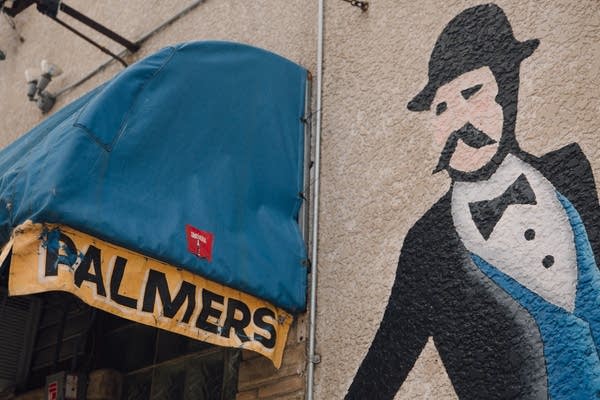Inside Minneapolis's Palmer's Bar, where Bonnie Raitt was once a regular
July 24, 2019

Bonnie Raitt recorded her debut album on a removed island in Lake Minnetonka — but she planted the seeds for its blues- and folk-inspired sound, and met up with the musicians who'd become her backing band, at Minneapolis' Palmer's Bar.
One such musician is "Spider" John Koerner, whom Raitt met on the East Coast. After signing a $40,000 contract with Warner Bros. Records, Raitt turned to Koerner and Minneapolis musician and producer Dave Ray, who clued her into Minneapolis' bustling music scene.
"So Bonnie actually flew out here and hung around the West Bank for about a week or so," saxophonist Maurice Jacox told The Current Rewind writer Michaelangelo Matos. Jacox played saxophone in Willie and the Bumblebees, the Minneapolis band who backed Raitt on her first album.
"She was known to hang out with people at the various West Bank hotspots," author and Cedar-Riverside historian Cyn Collins told Michaelangelo Matos. "She would hang out at Palmer's Bar doing New York Times crossword puzzles with 'Spider' John Koerner on a daily basis while Flo tended bar."

The West Bank neighborhood of Minneapolis has a rich cultural history, having evolved from a neighborhood of Scandinavian and Eastern European immigrants in the mid-1800s to a majority-Somali neighborhood today. In the 1960s and '70s, the West Bank was full of "hippie" and beatnik musicians, artists, and writers.
During the West Bank's beatnik era, Palmer's Bar was a watering hole where musicians would cross paths, and the bar remains an integral part of the neighborhood's music scene today. Palmer's history stretches back long before Bonnie Raitt's generation — the bar is over a hundred years old, and has survived Prohibition, bootlegging, and two World Wars.
Before the name Palmer's took hold, 500 Cedar Ave S. was a beer hall, opened in 1906 by the Minneapolis Brewing Company (which would later become Grain Belt Brewery). The beer hall attracted working-class customers, including the neighborhood's immigrant population, boat crews, and dock, rail, and lumber workers.
In the 1930s, there was a brothel upstairs from the bar, and it's rumored that during Prohibition, an underground tunnel connected Palmer's with the 5 Corners Saloon (which became the Nomad World Pub, and now Part Wolf) across the street.
The bar has gone by the name Palmer's since 1950. It has seen more than a dozen owners over its hundred years of operation. But it still maintains original touches from its early days, like the signature red and white tiled floor of early 20th-century Grain Belt beer halls.
Palmer's is a place where neighbors from all walks of life can cross paths. "It's black, white, gay, straight, rich, poor — it's everything and everybody, and a cross-section of the city," current owner Tony Zaccardi told the Growler.

In recent years, Palmer's has also gained attention from outside the Twin Cities. In 1990, it was transformed into a 19th-century British pub for the film "Old Explorers," and it appears in multiple scenes in the 2005 film "Factotum" (based on the Charles Bukowski novel of the same name). In 2014, Palmer's was named one of the "Best Bars in America" by Esquire.
Palmer's walls are decorated with personal mementos, like the "Wall of Shame," which features hand-written notes about patrons who have been "86'd" from the bar, or the "Wall of the Deceased," which memorializes late patrons and former co-owner Keith Berg. An autographed photo of Bonnie Raitt still hangs on a Palmer's wall to this day.
The bar is home to many regulars, but few are as loyal as "Spider" John Koerner, who visits Palmer's twice a day, and according to the Star Tribune, even gets his newspaper delivered there. "I think I probably had my first drink in Palmer's Bar in 1963 or 1964, so it's been well over five decades that I've been watching the West Bank," Koerner told The Current Rewind producer Cecilia Johnson.
Today, Palmer's hosts live music nearly every night. You can sit at the bar and listen to the musicians who are carrying on the West Bank's artistic legacy, from blues to folk to hip-hop. Who knows — you might even sit in the same chair where Bonnie Raitt sat decades ago, solving her crossword puzzles at the bar.
This story is a bonus feature of The Current Rewind, the podcast putting music's unsung stories on the map. You can find our in-depth history of Bonnie Raitt's debut album via any of the feeds below.
